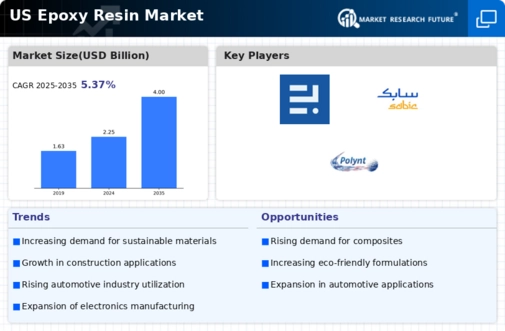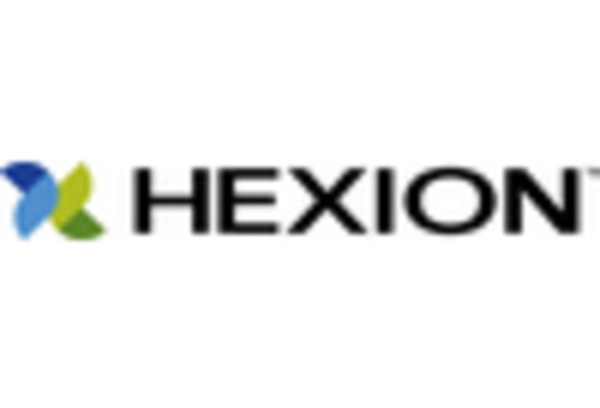Growth in Renewable Energy Sector
The flexible epoxy-resin market is poised for growth due to the expansion of the renewable energy sector. As the demand for wind and solar energy increases, the need for durable and flexible materials in the manufacturing of wind turbine blades and solar panels becomes critical. Flexible epoxy resins are favored for their excellent adhesion, chemical resistance, and ability to withstand harsh environmental conditions. The renewable energy market is expected to grow significantly, with investments projected to exceed $1 trillion by 2030. This growth is likely to drive demand for flexible epoxy resins, as manufacturers seek materials that can enhance the performance and longevity of renewable energy systems.
Increasing Demand from Electronics Sector
The flexible epoxy-resin market is significantly influenced by the rising demand from the electronics sector. With the proliferation of electronic devices, there is a growing need for materials that can withstand thermal and mechanical stress. Flexible epoxy resins are increasingly utilized in the production of circuit boards, encapsulation, and potting applications due to their excellent electrical insulation properties. The market for flexible epoxy resins in electronics is expected to reach approximately $500 million by 2026, reflecting a robust growth trajectory. This demand is further fueled by the trend towards miniaturization of electronic components, which necessitates the use of flexible materials that can accommodate compact designs without compromising performance.
Rising Consumer Awareness and Preferences
Consumer awareness regarding the benefits of flexible epoxy resins is on the rise, influencing the market positively. As end-users become more informed about the advantages of using flexible epoxy resins, such as their superior bonding capabilities and resistance to environmental factors, demand is expected to increase. This trend is particularly evident in sectors like construction and automotive, where consumers are seeking high-performance materials that offer durability and flexibility. The flexible epoxy-resin market is likely to see a growth rate of around 5% annually as consumer preferences shift towards products that provide enhanced performance and longevity. This growing awareness is expected to drive innovation and product development within the market.
Sustainability Initiatives in Manufacturing
Sustainability initiatives are becoming a pivotal driver in the flexible epoxy-resin market. As environmental concerns gain prominence, manufacturers are increasingly focusing on developing eco-friendly resins that minimize environmental impact. This includes the use of bio-based materials and the reduction of volatile organic compounds (VOCs) in resin formulations. The flexible epoxy-resin market is likely to benefit from these initiatives, as consumers and industries alike are prioritizing sustainable products. According to recent data, the market for bio-based epoxy resins is projected to grow by over 10% annually, indicating a shift towards greener alternatives. This trend not only aligns with regulatory requirements but also enhances brand reputation, making sustainability a key driver in the market.
Technological Advancements in Manufacturing
The flexible epoxy-resin market is experiencing a surge due to technological advancements in manufacturing processes. Innovations such as improved curing techniques and enhanced formulation methods are enabling manufacturers to produce resins with superior flexibility and durability. This is particularly relevant in industries like automotive and aerospace, where high-performance materials are essential. The introduction of automated production lines has also led to increased efficiency, reducing costs and time-to-market. As a result, the flexible epoxy-resin market is projected to grow at a CAGR of approximately 6% over the next five years, driven by these advancements. Furthermore, the ability to customize formulations to meet specific application requirements is likely to attract more end-users, thereby expanding the market further.

















Leave a Comment